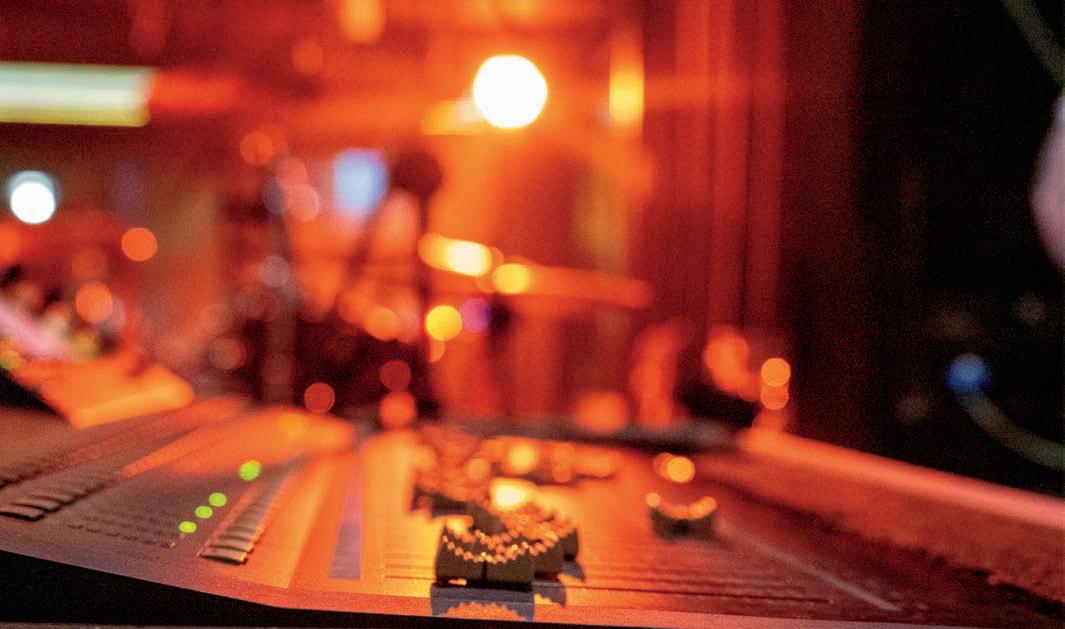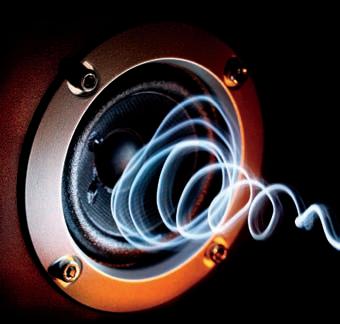
7 minute read
TECHNOLOGY
Disseminate the Right Sound
While music and dining seem ideally matched, many of the audio systems in restaurants deliver uneven sound coverage. The result is music that may be inaudible at one table and uncomfortably loud at another. Thus it is important to understand the nuances of sound system and follow guidelines how to treat your guests with melodic delicacy.
Advertisement
The sound system is one of the prominent components in the hospitality industry. A restaurant serves a mood and not just food. It is the atmosphere in the form of cogent ambiance, which drives customers to visit a place again and again.
Time and again it has been recognized that ambience of a venue is a strong marketing tool.
Sound makes an Atmosphere
When it comes to sound, tempo and loudness have historically been the key dimensions.
These atmospheric dimensions need to be carefully designed to match with moods of the targeted customer. One would not have linoleum on the floor of an exotic restaurant. The discriminating customer would expect carpeting or perhaps marble.
By the same token an exclusive restaurant would not have the same lighting as a fast food joint. Similarly, choice of music at a pub would not be same as a restaurant offering oriental cuisine.
In short, atmospherics are designed to convey a specific image and set a definite mood. The key is to have all the senses – sound, vision, smell and touch in sync.
The Value of Music
Various researches reveal that one of the key senses the customer relates to, is hearing. It greatly affects the time customer will spend in the restaurant. Research concludes that customers equate the presence of music with better service. On the other hand behavioural scientists have studied the effects of music on worker productivity. They have found that high tempo music can serve as a strong stimulus to overcome low biorhythmic period that all humans experience all through the day. As a result, companies that offer music programming can provide a package that not only matches the ambience of a restaurant but also help employees remain alert. The owners can use music as a tool to increase both customer comfort and customer stay time.
Quality Aspects
While the importance of music in restaurants and retail outlets is a recognized fact today, quality of sound is not what the guest encounters often when he is eating out. At most outlets one can hear music but it does not usually sound clear and natural. Traditionally, music is judged on content and tempo, often ignoring the critically important aspect of quality of sound.
In order to understand why quality of sound is often absent in a large number of outlets, it is helpful to examine the elements of a commercial music system. • The first link of this chain is the programming content – the material that is played. • The second link is the storage medium – source for where the sound is generated. • The third link is the transmission medium – FM. • The fourth link is the system electronics, primarily the amplifier other than that would include the source controller and system controller. • The last and critical link is the loudspeaker.
The sound signal travels through these links sequentially, so if one is inferior the final signal will be inferior. The chain is only as strong as its weakest link.
Over the last couple of decades the quality of consumer hi-fi equipment has steadily improved to a point where systems manufactured now reproduced high quality, natural sound. It is no longer necessary for you to be an audiophile to have a high quality sound system.
The result is that people everywhere – even your customers - are used to high quality sound. The hospitality industry unfortunately has not kept pace with the modern advances. Yet the various links in the audio chain have seen improvements.
Better Scheduling
The music programming business has evolved dramatically since the early days. Today there is an entire range of original artist recordings encompassing classical, folk, indipop, rock, Jazz, Pop, blues, country and western. That’s not all there’s a whole range of occasion specific programming available.
Better Amplifiers and System Electronics
The amplifiers used to reinforce sound in large public places have seen a major shift in its designs. What began as a suitcase size, today, comes on a small printed circuit board. To the benefit of the user and the application these systems have become modular and can be extended as per the need and number of speakers and areas. All this now happens without a change in the backbone or a need for a shutdown. Increase in areas means more speakers but at the amplifier end all that is needed to do is add a card and the system is up and running. From the maintenance point of view these are a blessing in disguise as even if one amp fails all one needs to do is replace that card the overall system keeps performing without interruption.
Loudspeakers a Key Factor
Without better loudspeakers, dramatic improvements in the other critical elements in the audio chain would result in little or no overall improvement in the quality of sound the customer hears.
How does one tell the difference between a good and a bad speaker? One might look at a list of specifications, but unless he is an engineer, the ohms, Watts and other data won’t mean much.
You might take a look at these speakers themselves. Maybe the bigger the better. Don’t be fooled; its not necessarily true. When you go to buy car you drive it. If one is buying speakers he should listen to them and compare the sound. Particularly useful is an A-B demonstration where you directly compare speakers playing the same music from the same system side by side.
You need not be an audio expert to recognize good sound quality. Research shows that three out of four listeners can tell the difference between poor sound and quality sound and will consistently choose the better sounding loudspeaker.
To help people understand sound quality sound engineers have established a standard set of simple definitions that allow all of us to characterize audio performance in common terms rather than engineering jargon.

Unfolding Quality sound
The descriptive terms are: “Clarity,” “Fullness,” “Brightness,” “Fidelity” and “Pleasantness”. Understanding these terms gives you the reference you need to make judgments about what you hear. These definitions will help evaluate sound quality: • Clarity means that sound reproduction is distinct, pure and clear. You can clearly hear and distinguish between different instruments and voices. The opposite is an unclear, distinct, muddy sound. • Fullness means the quality of the bass (low frequency) sounds is balanced with mid-range and treble (high frequency) sounds so that the entire range is included without imitations. The opposite is a thin sound. Good sound is neither too full or too thin. • Brightness means the quantity of the treble sounds is balanced with the midrange and bass sounds. The opposite is a dull sound. Good sound is neither too bright or too dull. • Fidelity refers to how faithful or similar the reproduction is compared to the original sound. Perfect fidelity means the music sounds exactly as it would if you were present in the room where it was originally performed. • Pleasantness is an overall rating that concentrates on the lack of aggravations and annoyances in the reproduction.

The End Result
The bottom line is that if using this simple vocabulary, you can describe your own experience with sound, you can easily identify good and poor sound. If you can tell the difference so can your customers.
With evolution of better programming, and electronics and now better loudspeakers, there’s no reason to have inferior quality of sound in the outlet. For a reasonable cost, today one have a system that makes a Steinway grand Piano sound as rich and full as an original instrument.
A good sound system can be the audio equivalent of clear panes of glass, allowing true sound reproduction to convey the image you intend, or they can act as filters that distort and convey something unintended to the customers.
Business managers are faced with increasing competition from a variety of sources and it is becoming increasingly difficult to distinguish your outlet from the competition. One way to gain an edge is to create a unique and exciting environment. And what better way to do it than getting quality sound. n

